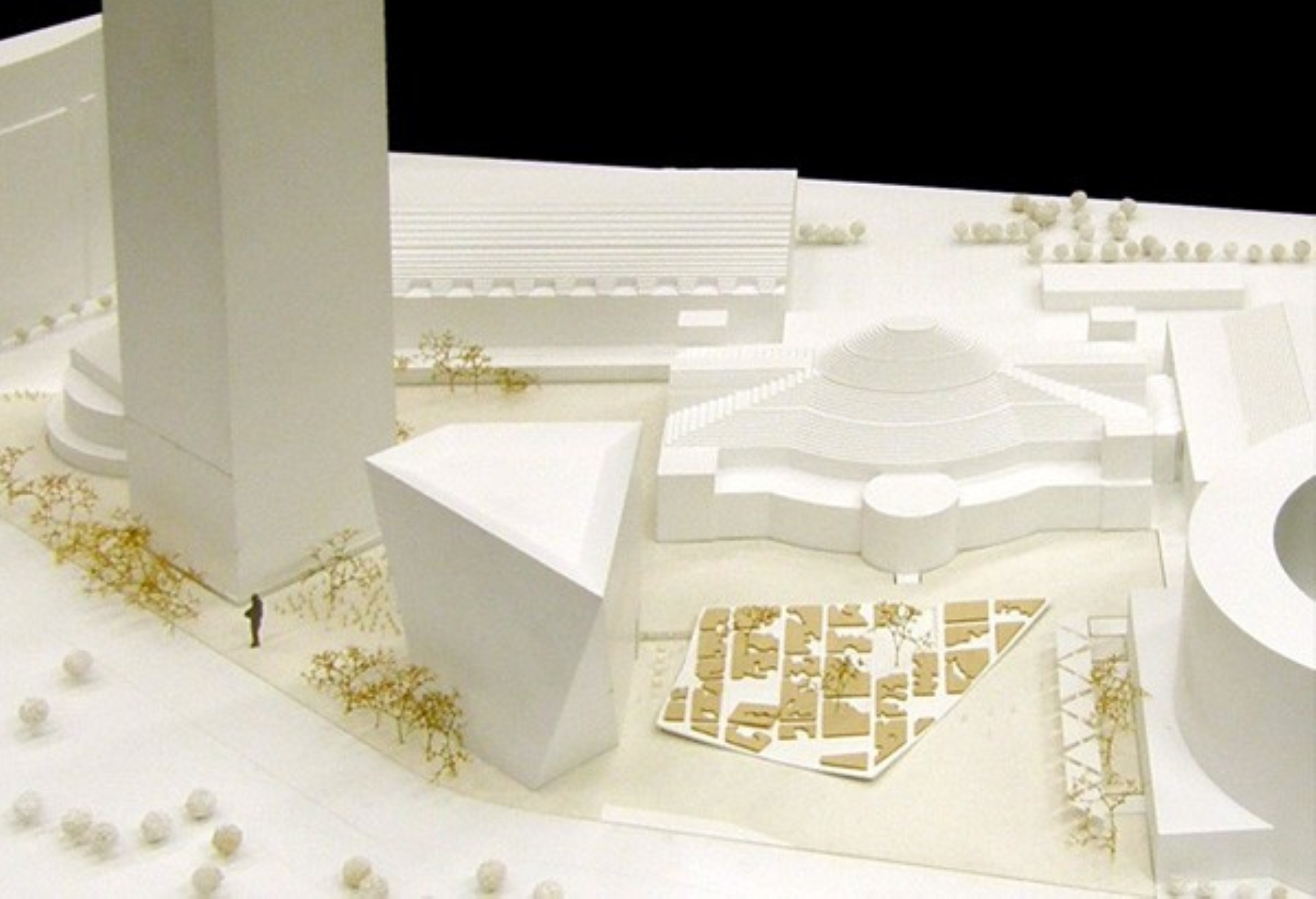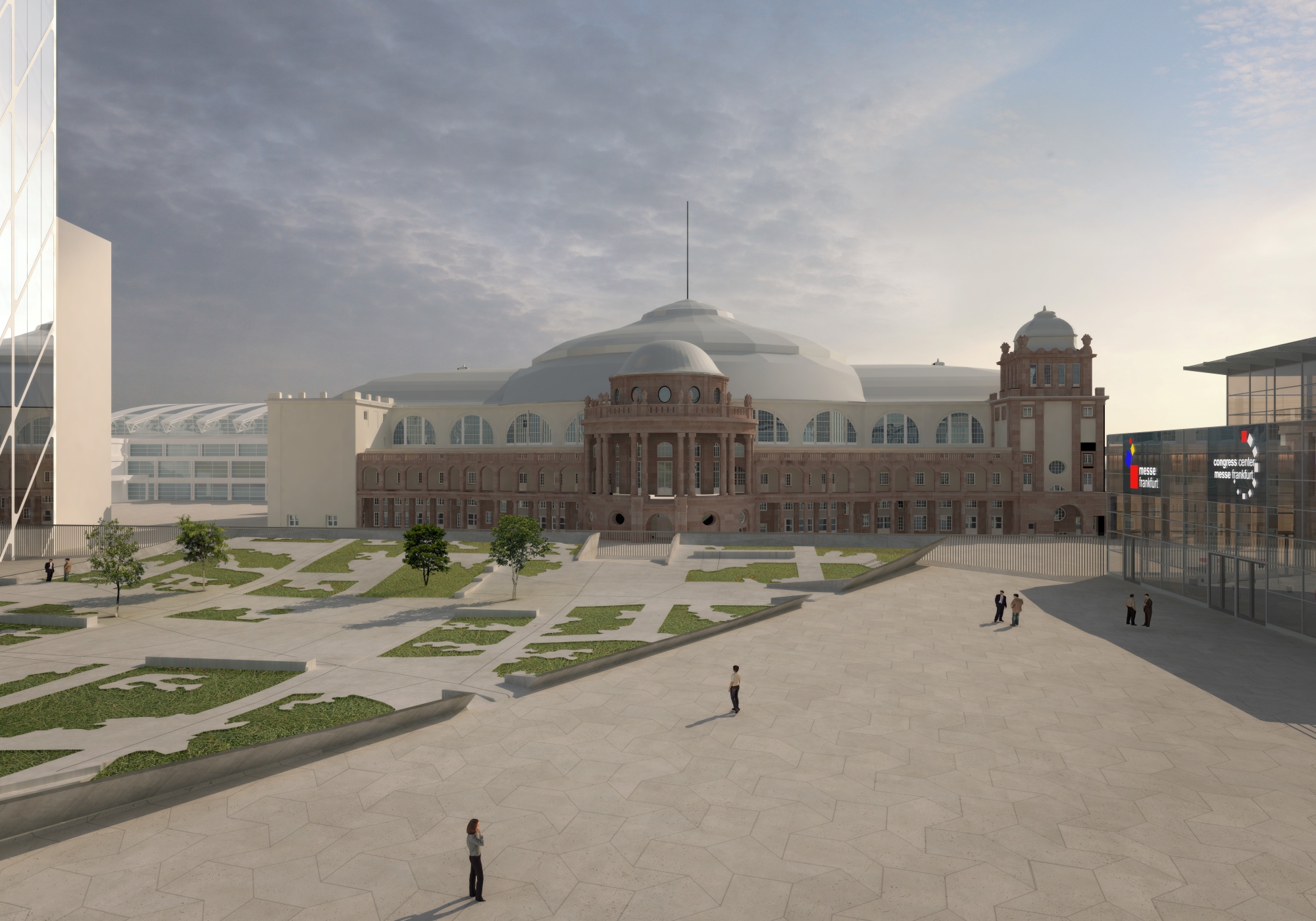
Foreground Frankfurt Festival Hall
Competition to redesign one of Frankfurt's most important squares
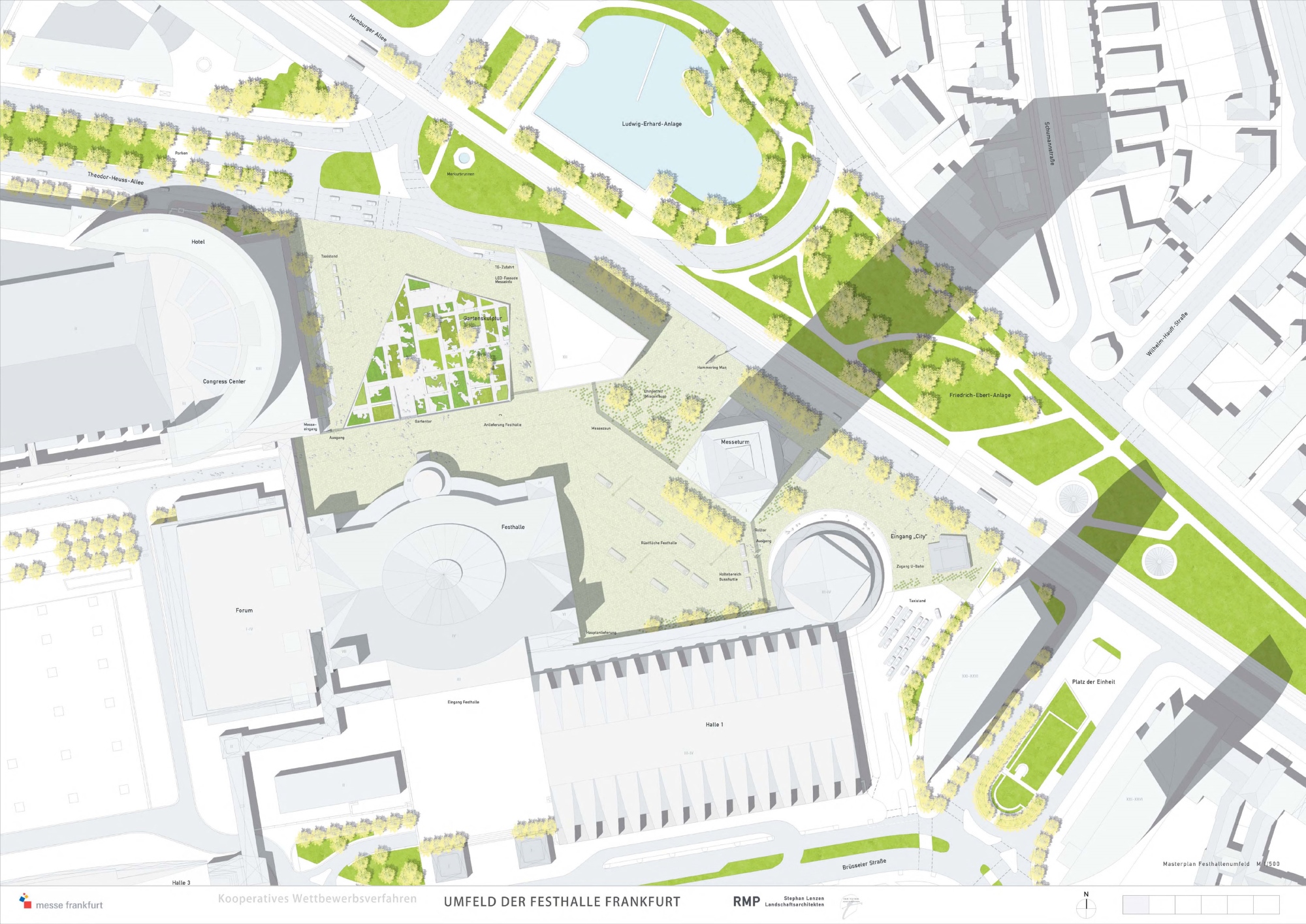
In 2007, the Frankfurt Trade Fair Company and the City of Frankfurt am Main launched the redesign of “the second most important square in the city of Frankfurt” (Edwin Schwarz, then Head of Planning, CDU) with an ambitious, comprehensive design competition. The inhospitable atmosphere of this entrance to the city center of Frankfurt am Main had long been considered an eyesore and an urban planning “design gap.”
From the briefing: “The area in front of the Festhalle represents an urban space that is currently not fulfilling its potential. The location has an inhospitable atmosphere. It is a draughty paved area that is rather unpleasant to walk through. The view into the rear courtyard of the Festhalle with its delivery area also contributes to this. In addition, the Festhalle, Messeturm and CMF buildings appear to be placed without any connection to each other. We are looking for a solution that overcomes these problems and highlights the role of the square as an open, positive urban space.”
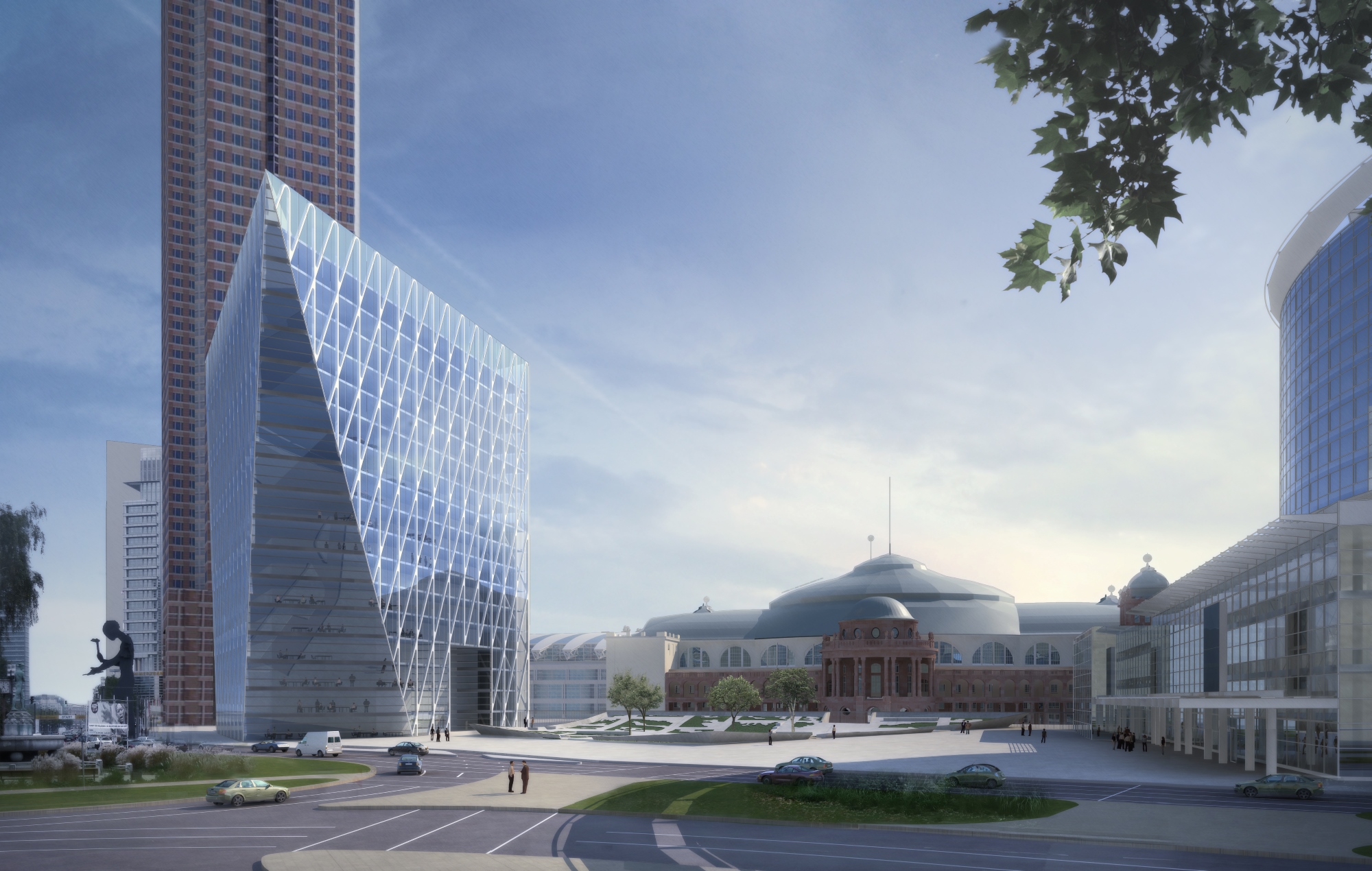
The Festhalle (designed in 1906 by Friedrich von Thiersch) was functionally a prototype. Its access system and design are based on classic castle buildings. At the rear of the Festhalle, you can still see a garden side similar to that of a castle. In his “Study on the Development of the Exhibition and Festhalle Site in Frankfurt am Main” (1920), Thiersch already anticipated a framing effect created by flanking structures. Our design also ties in with this guiding principle of Thiersch’s.
Our award-winning garden design consists of a sculpturally curved surface that can be planted with flowers and other vegetation as desired. It offers attractive, unusual perspectives for the city’s public, even when viewed from above from the exhibition tower or the hotel.
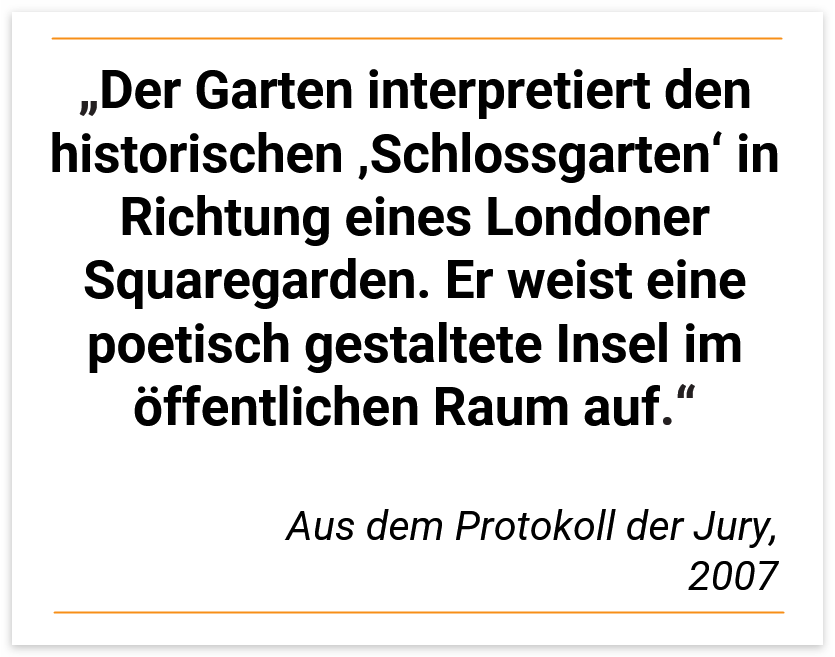
From the jury’s report:
“The guiding principle … is convincing. On the one hand, this results in a public ‘festival hall square’ with an introverted, artistically designed ‘garden sculpture’. On the other hand, the eastern ‘assembly area’ of the festival hall is largely hidden from view from the outside and can be used to its full potential by the trade fair. The proposed ‘solitary elements’ (building and garden) are convincing in their arrangement, size, and form. They cleverly refer to the historical and current urban spaces and sightlines identified by the authors. In terms of design language, they decisively focus on a new, independent form of expression. The garden interprets the historic ‘castle garden’ in the direction of a London square garden. It features a poetically designed island in the public space. The proposed raised edges as a new type of boundary for the garden promise surprising perspectives.”
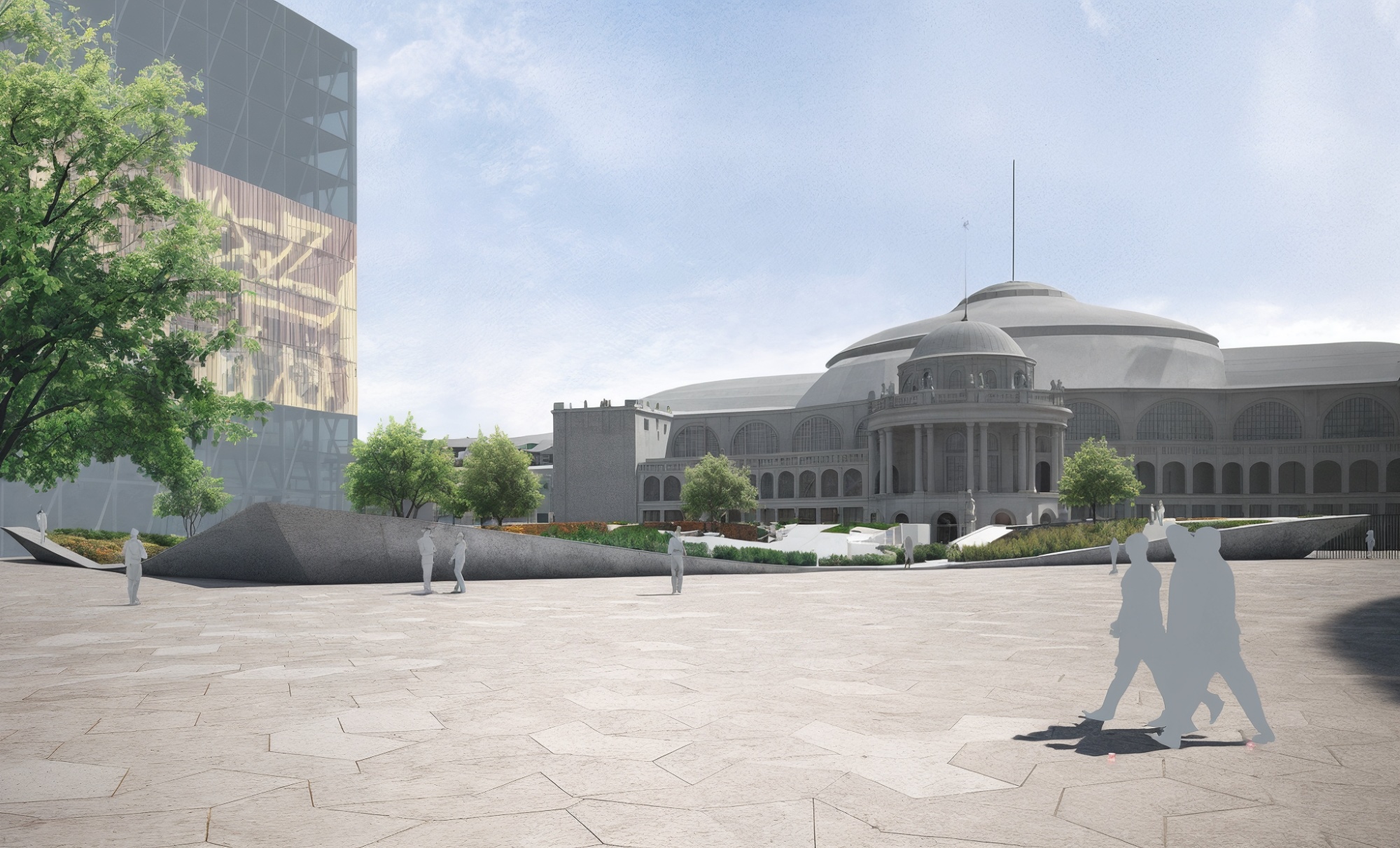
The advantages of the designed garden bowl remain valid:
- Unsealing of a large part of the area and sustainable greening.
- The fence in front of the festival hall can be removed thanks to the raised edges of the “garden bowl” (up to 2.80 m).
- The design creates a defined interior space and reduces wind and traffic noise.
- The four entrances to the garden bowl reopen paths to the concert hall via the forecourt, which existed until the 1980s.
- The entrances can be closed, making the site usable for events, whether accessed from the trade fair or from the city.
- In addition, we now see more clearly than before that the contrasting yet tolerant coexistence of history and modernity, of “business” and lingering tranquility, can be seen as symbolic of Frankfurt’s cityscape.
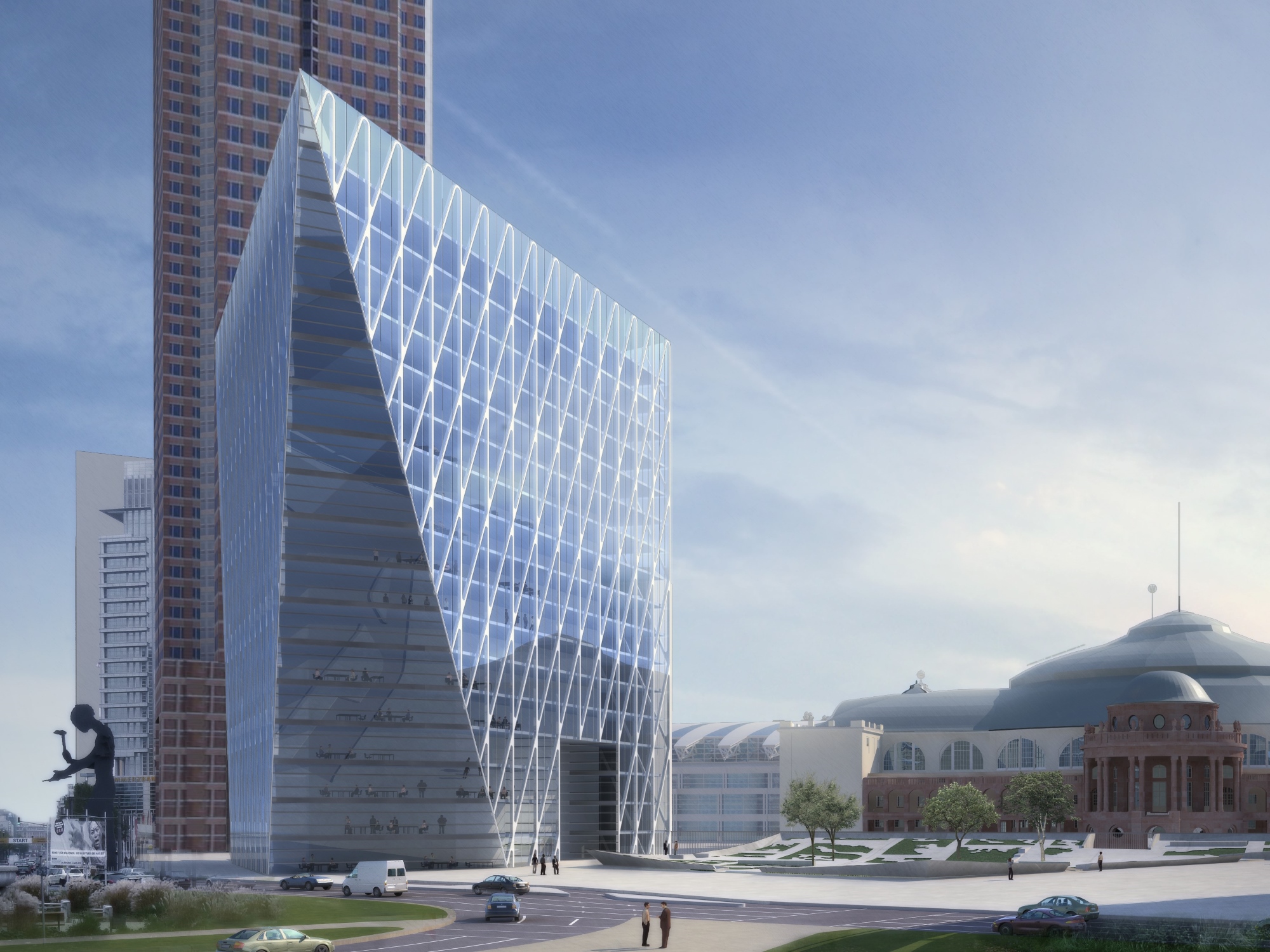
In addition, the architectural firm TEK TO NIK developed the idea of placing a 60-meter-high, sculpturally shaped building precisely at the edge of the open space, so that the “barren” open space would be framed and the downdrafts from the skyscraper would be reduced. In terms of urban planning, the triangular structure was developed from an axis plan as a triangular structure with the same height and similar dimensions as the CMF. The Festhalle thus takes center stage in a building ensemble. However, its proximity to the Messeturm requires a building with its own character.
This is achieved through a sculptural building design that allows for all conceivable uses. A passageway in the building allows direct public access from the Messeturm to the Festhallengarden.
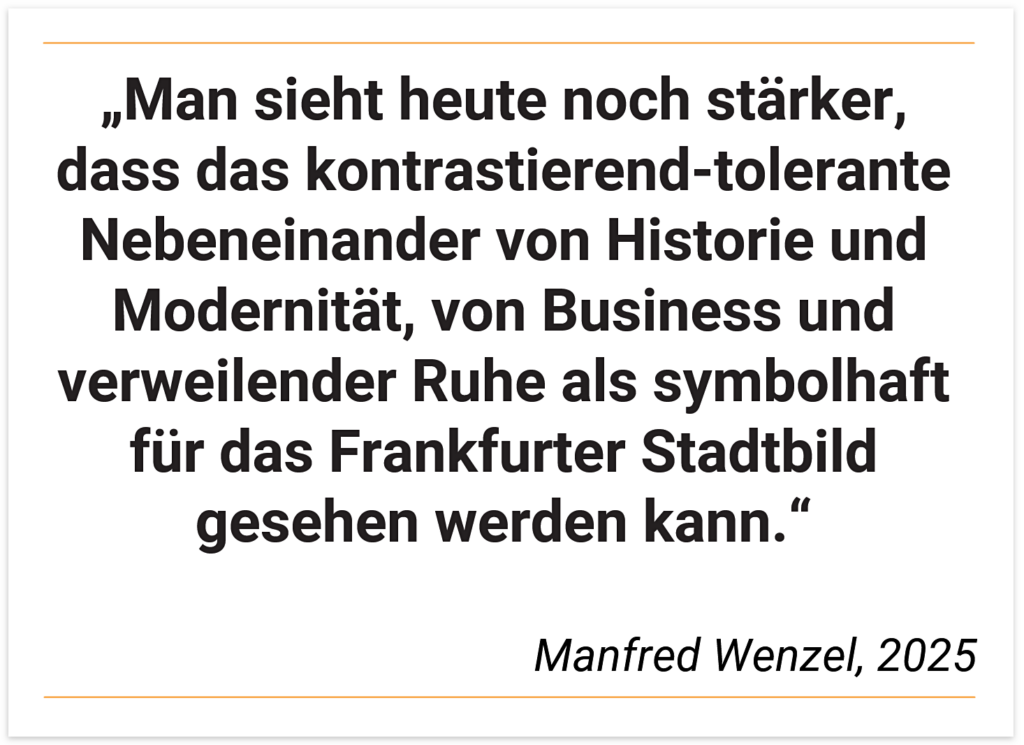
From the jury’s report:
“The crystalline form of the solitary building was developed by the designers from the various alignment lines and reference edges, which the jury considers to be positive in principle.”
The idea was incorporated into the high-rise framework plan and remains there to this day. The redesign of the exhibition center forecourt would create a new attraction for the city.

